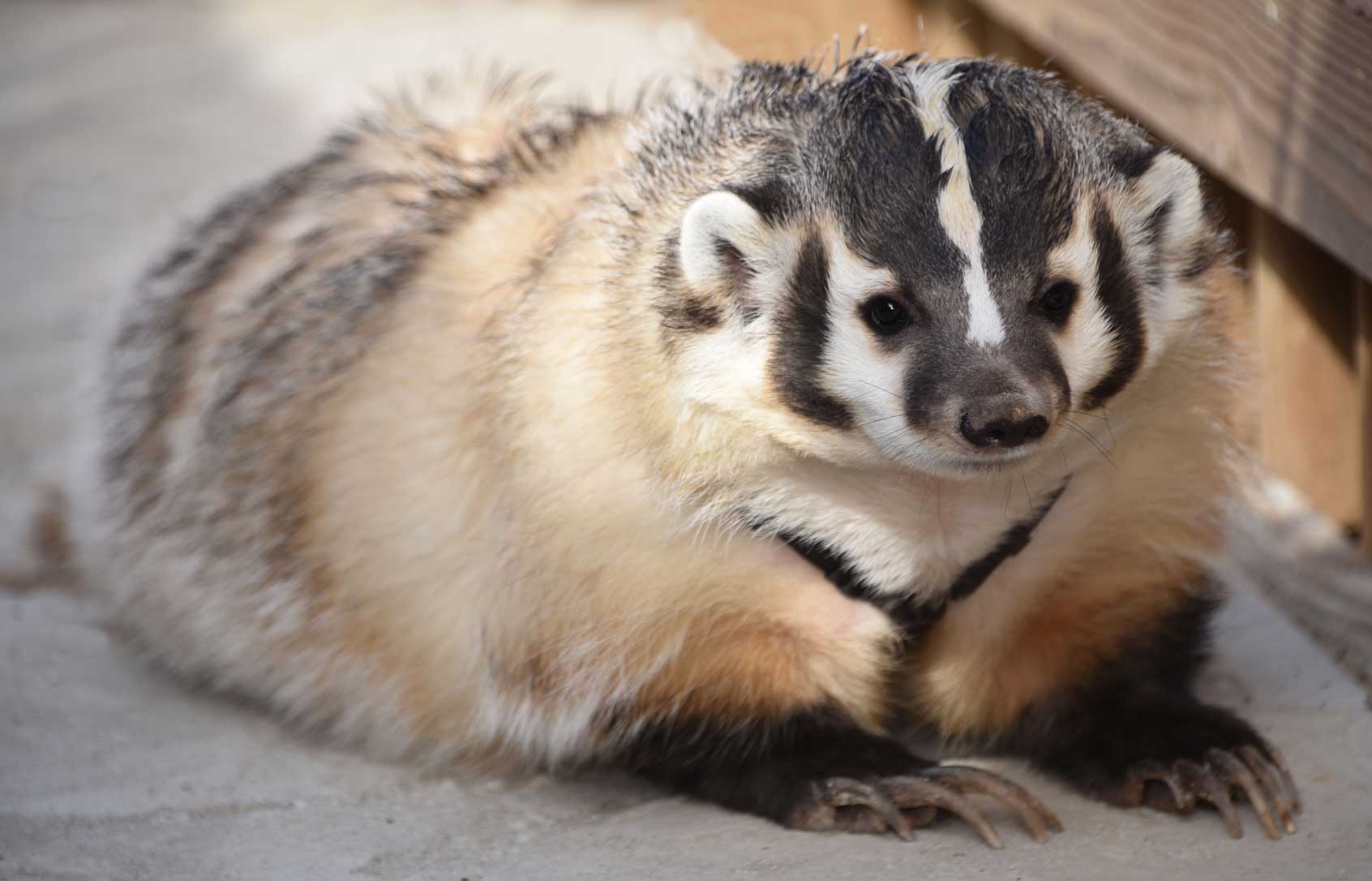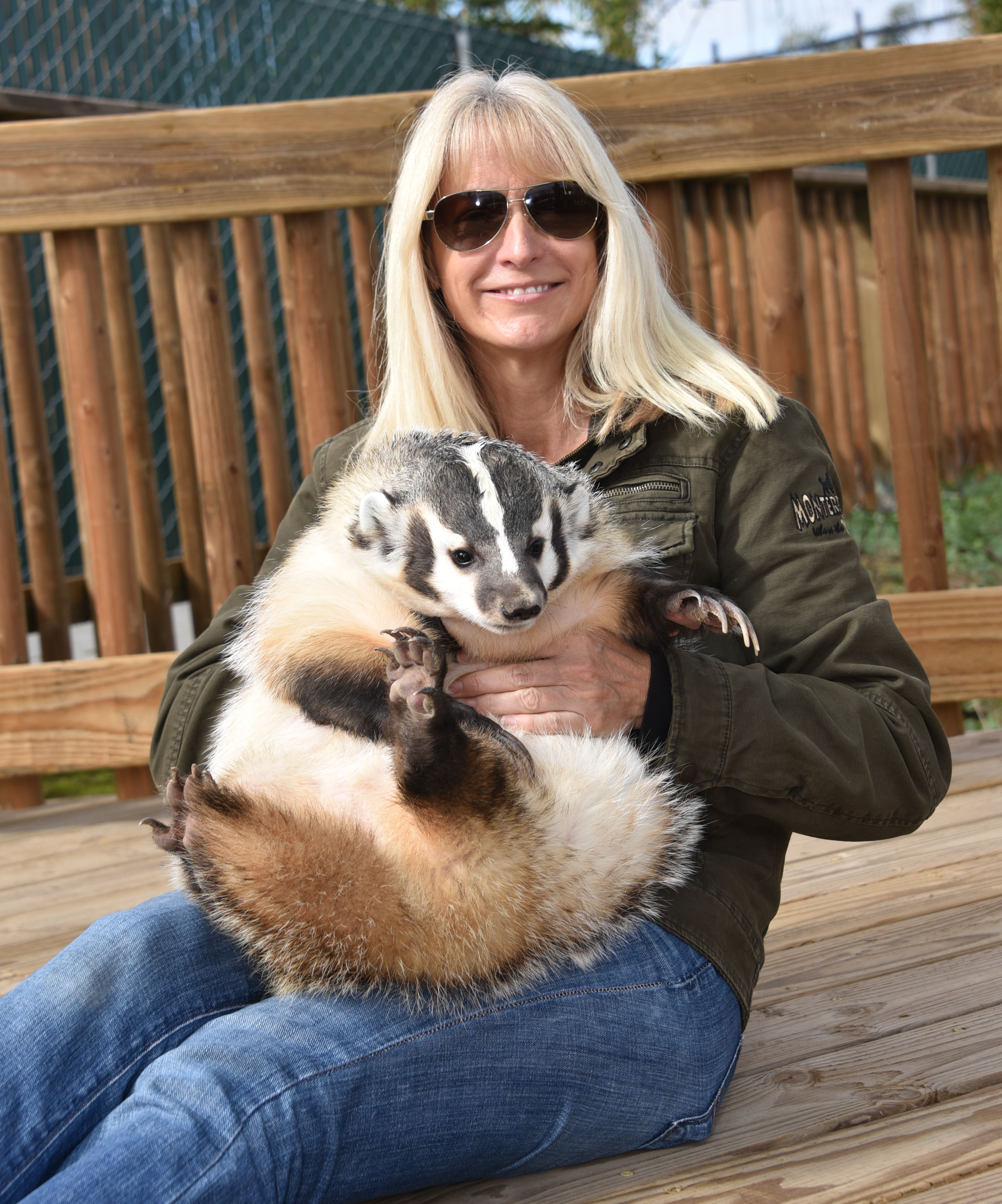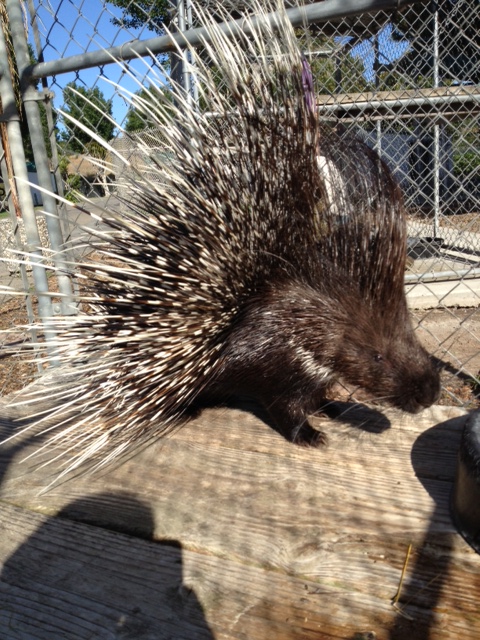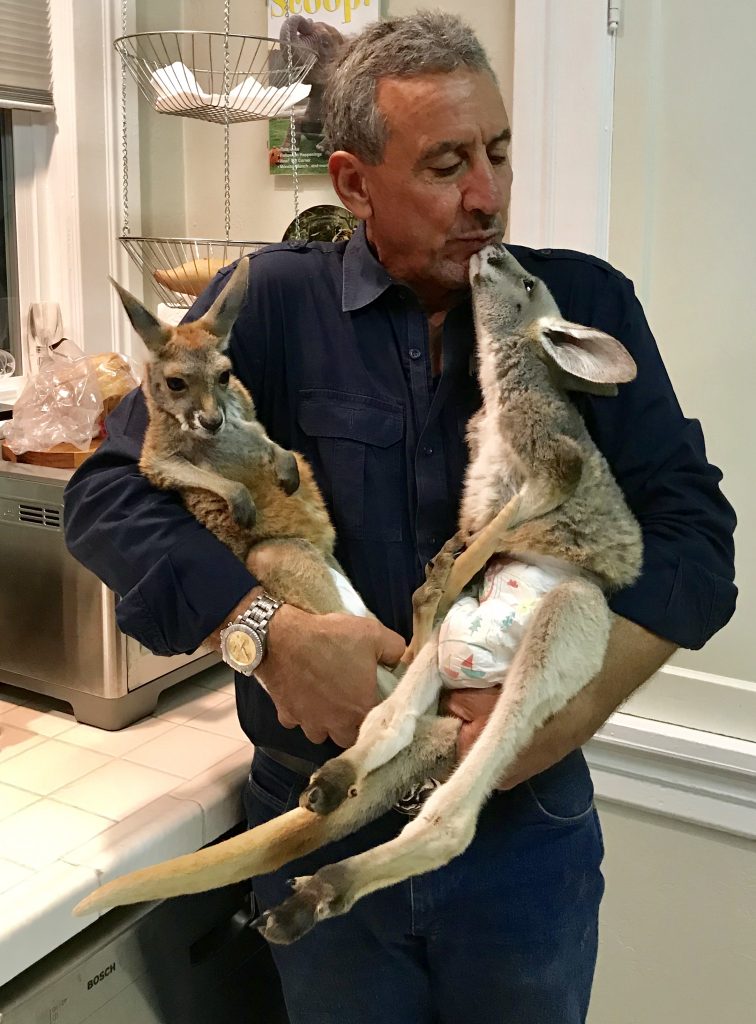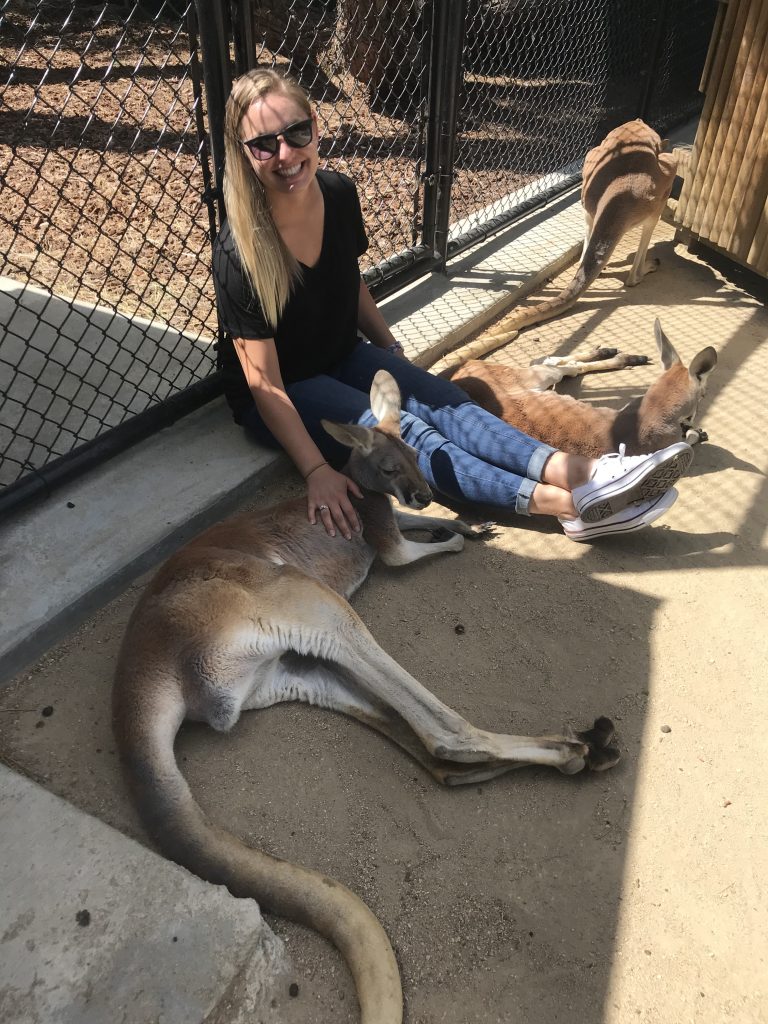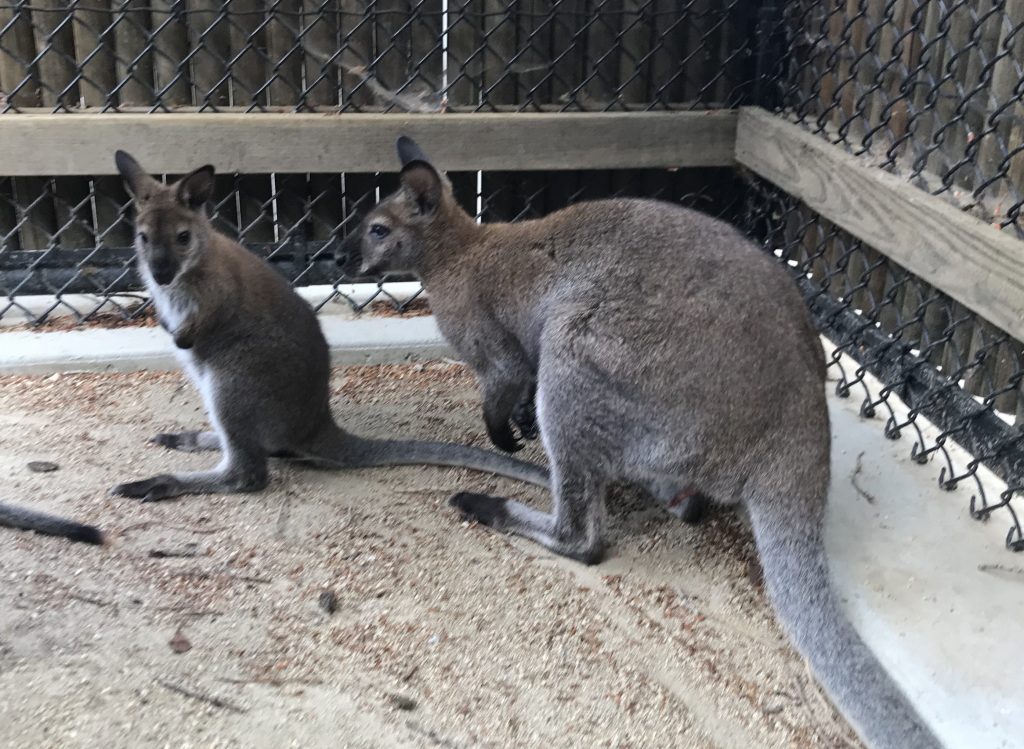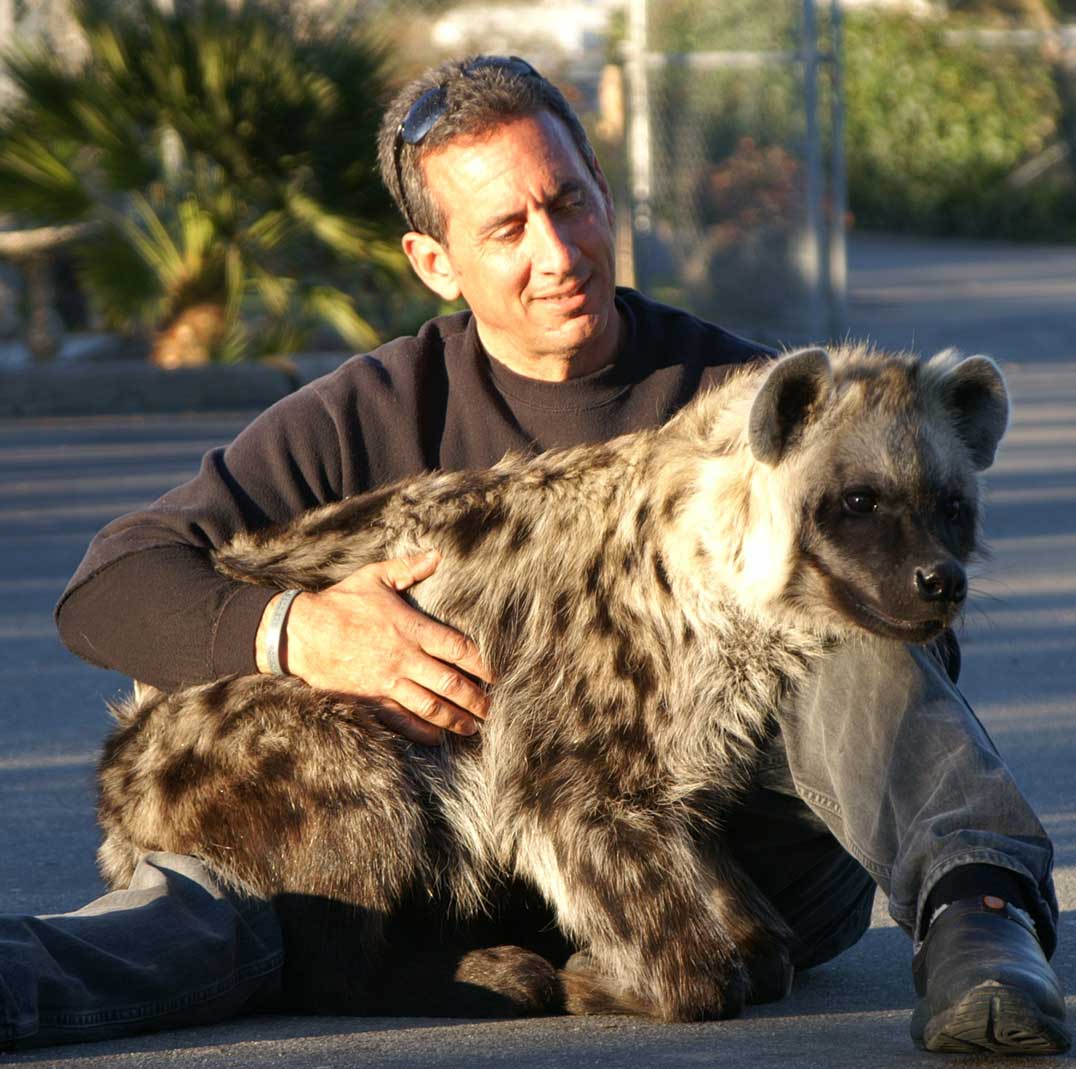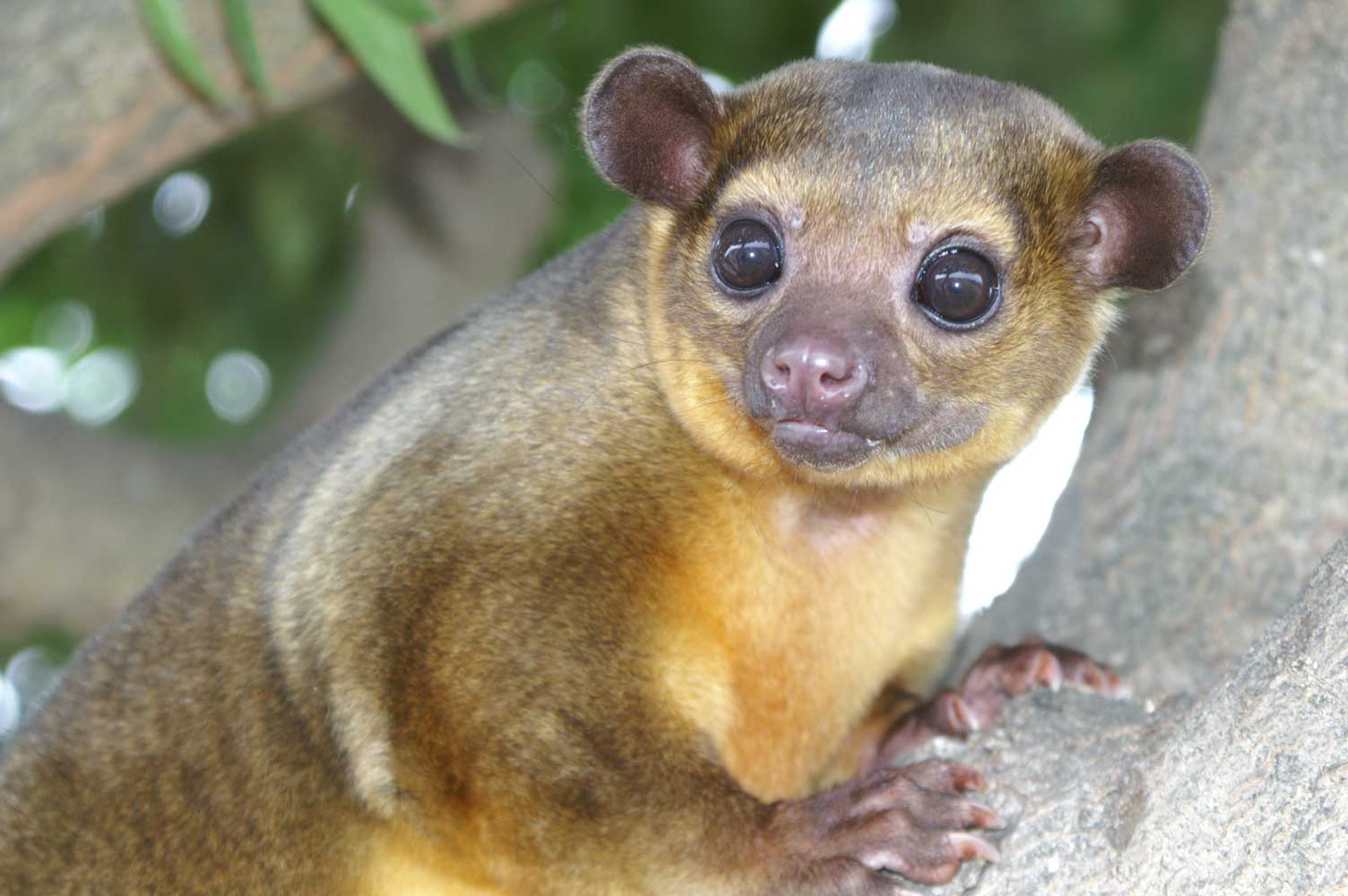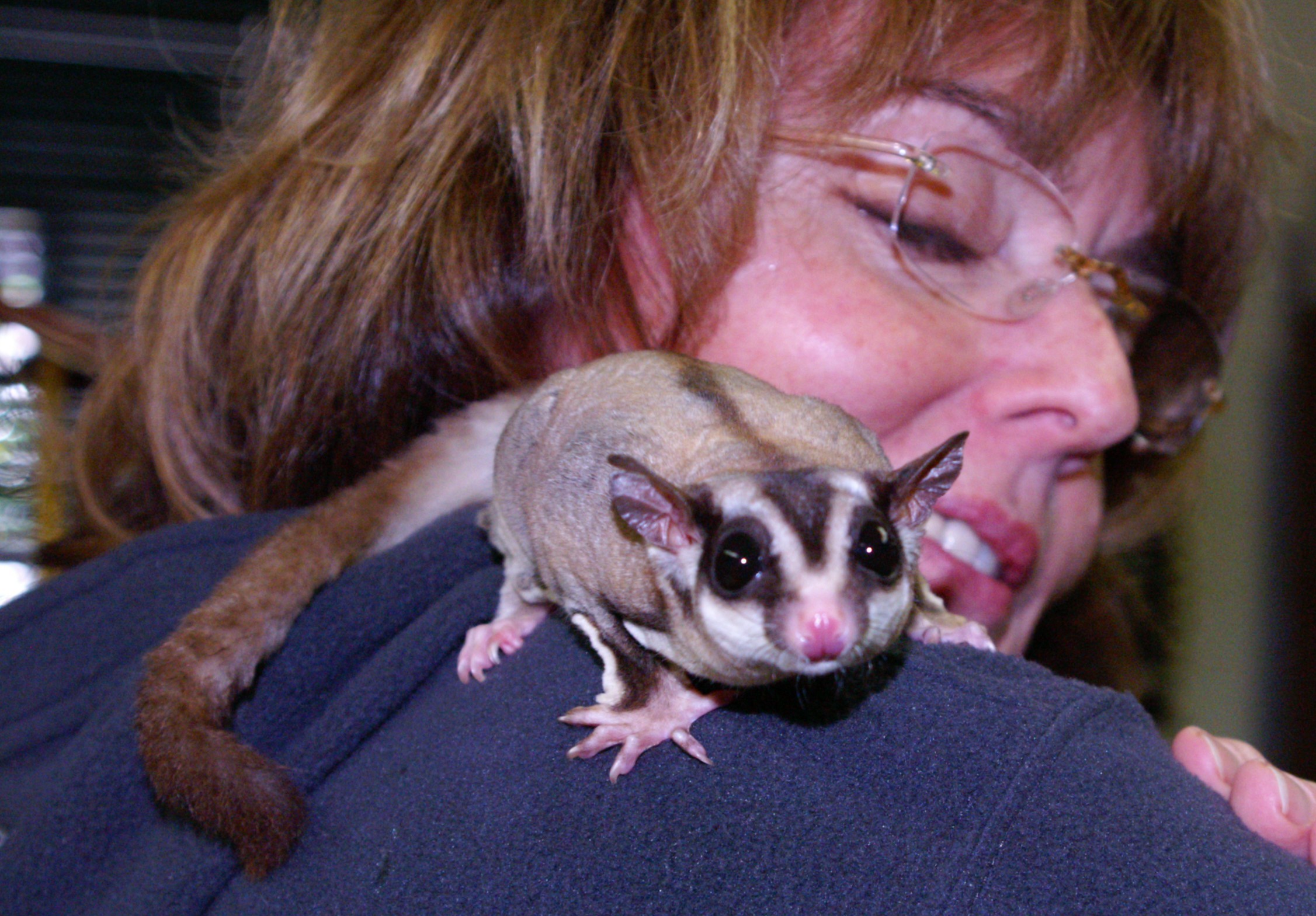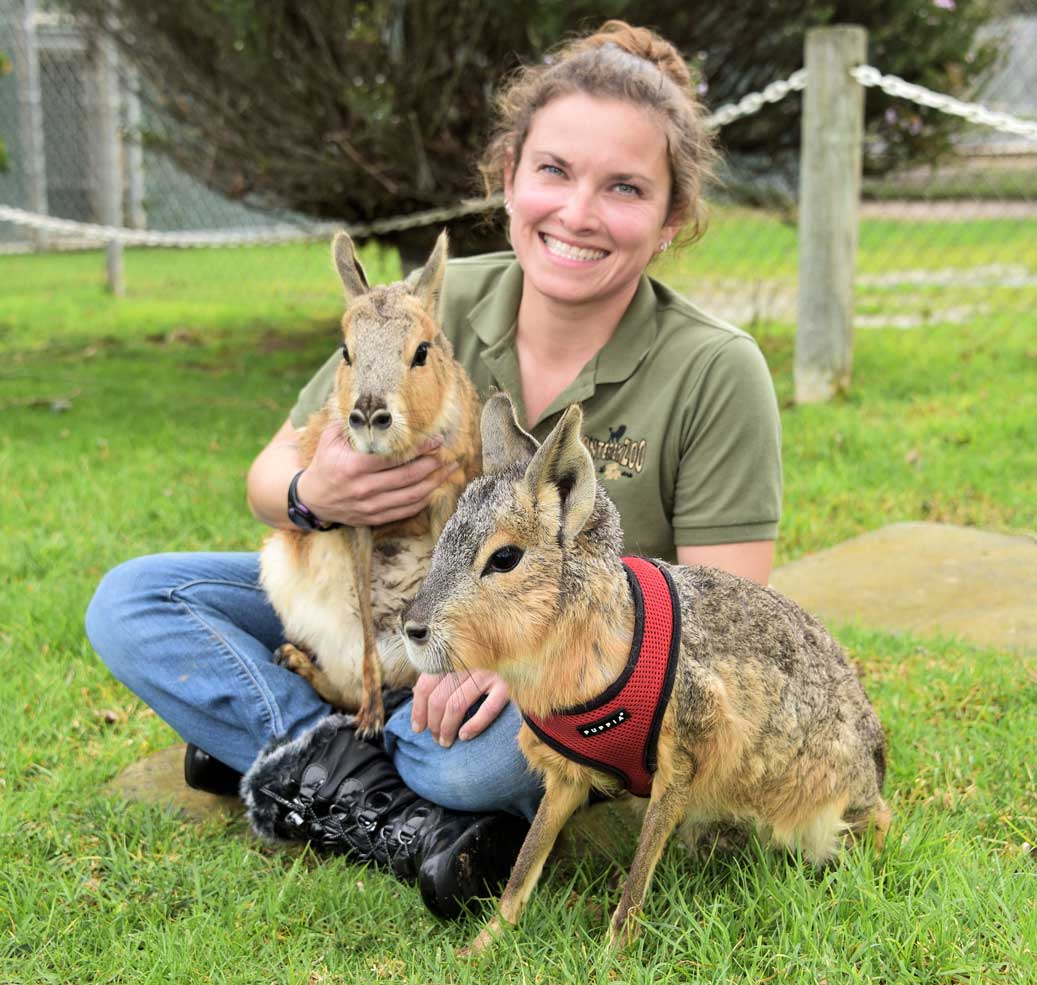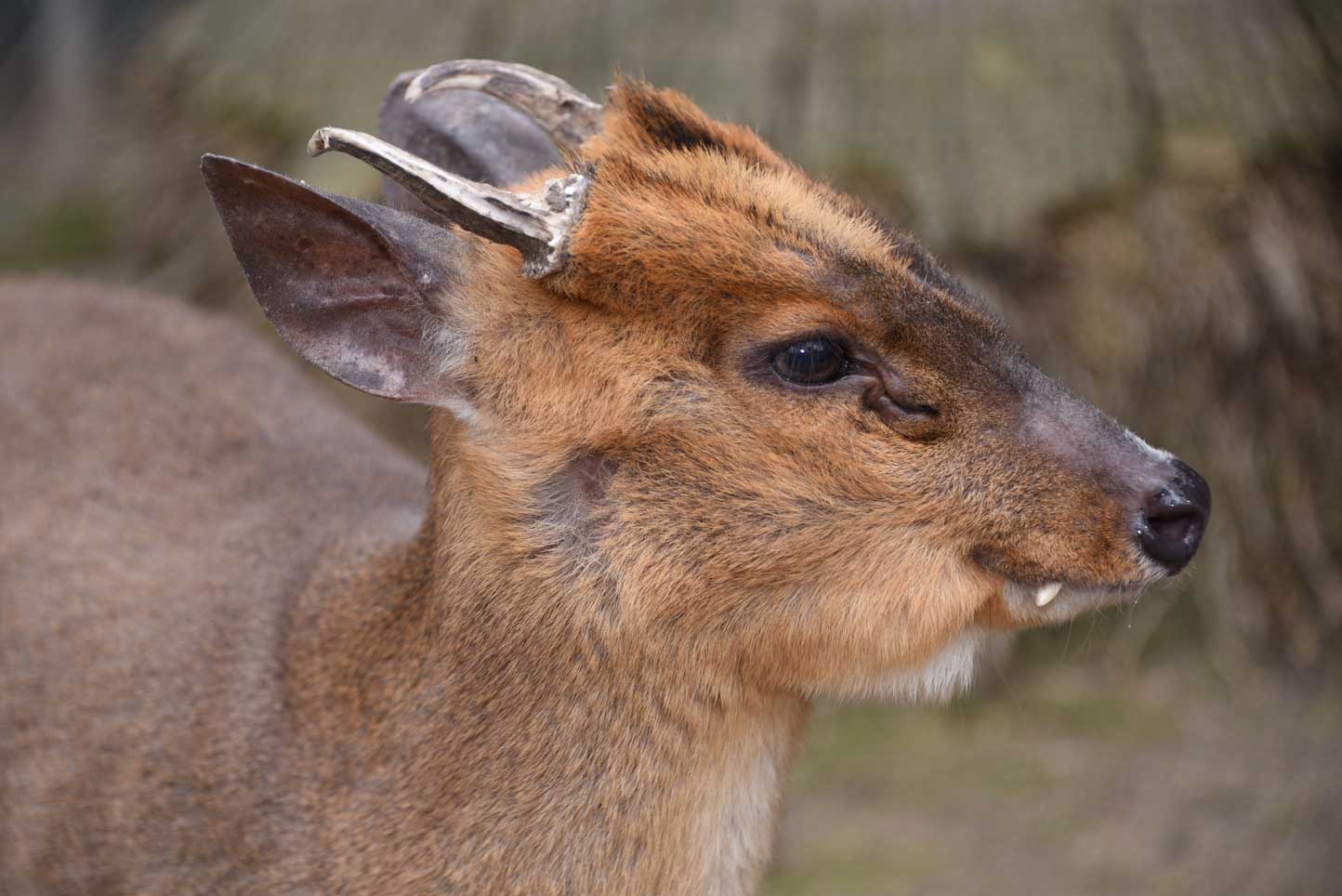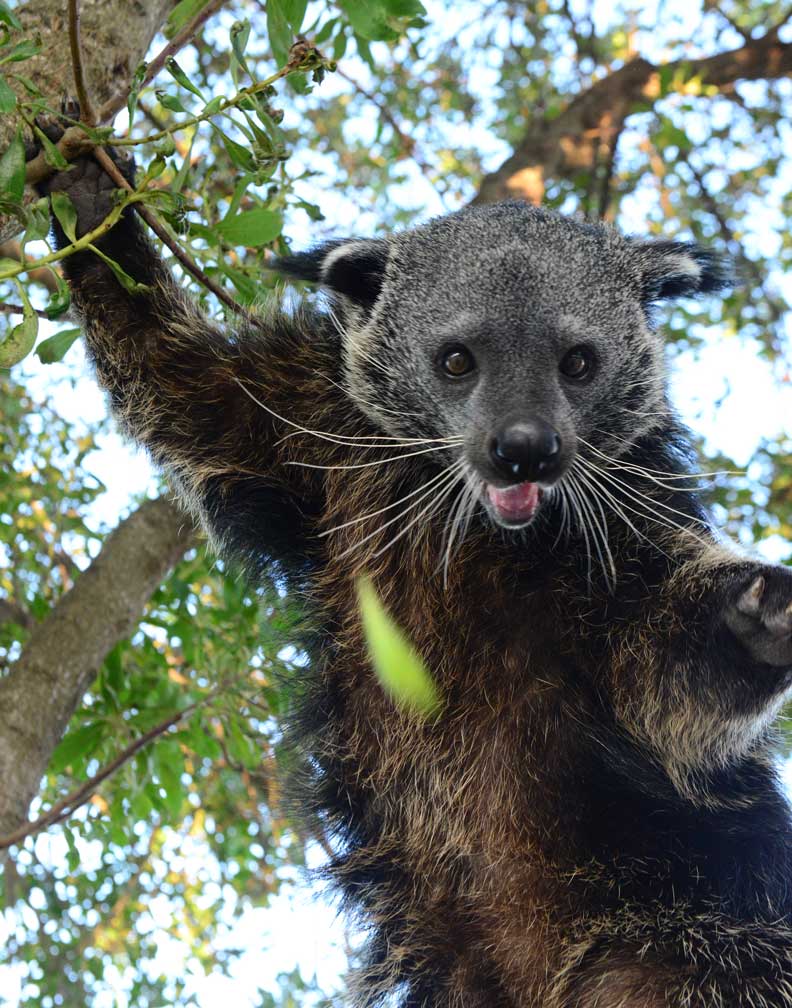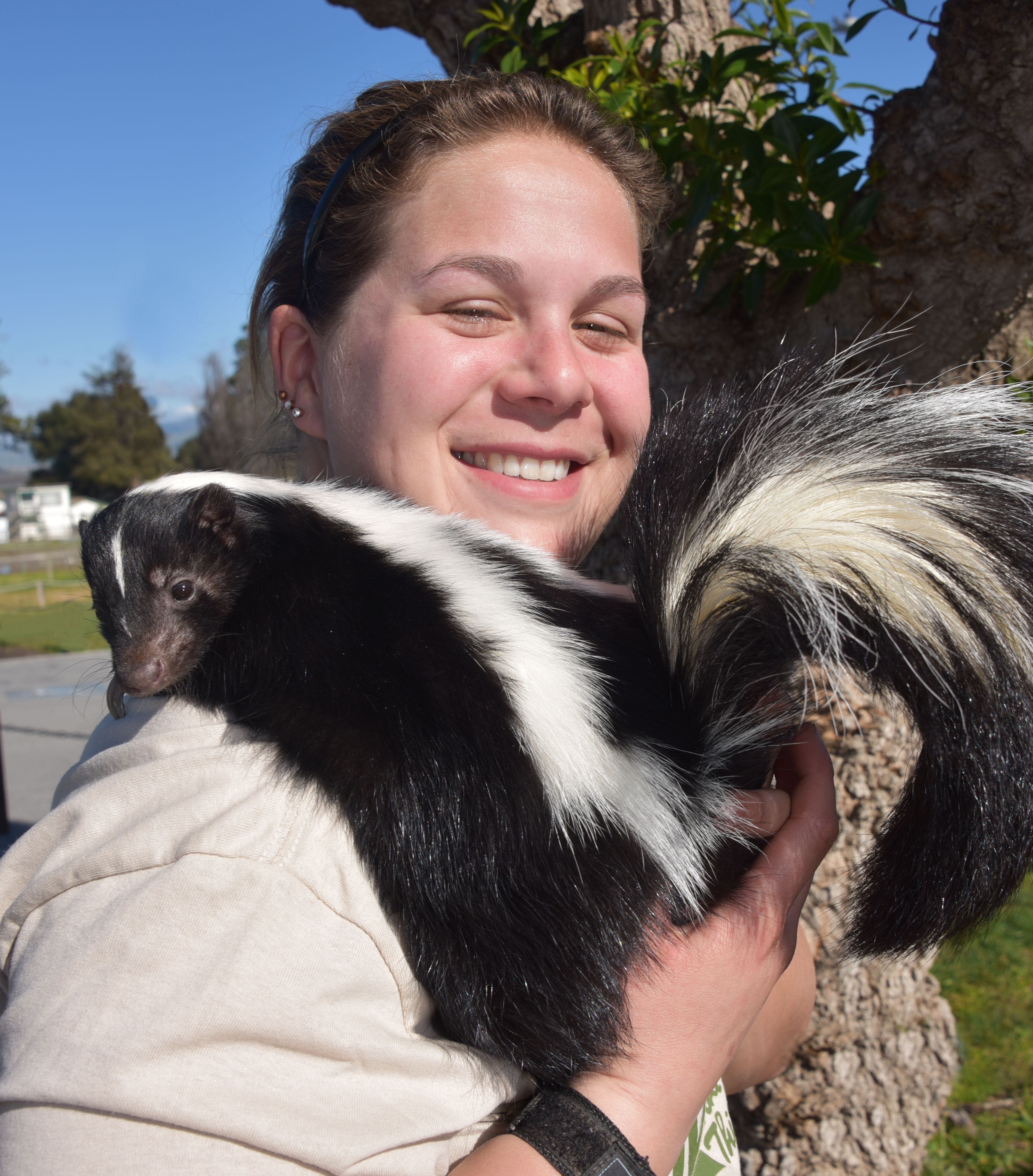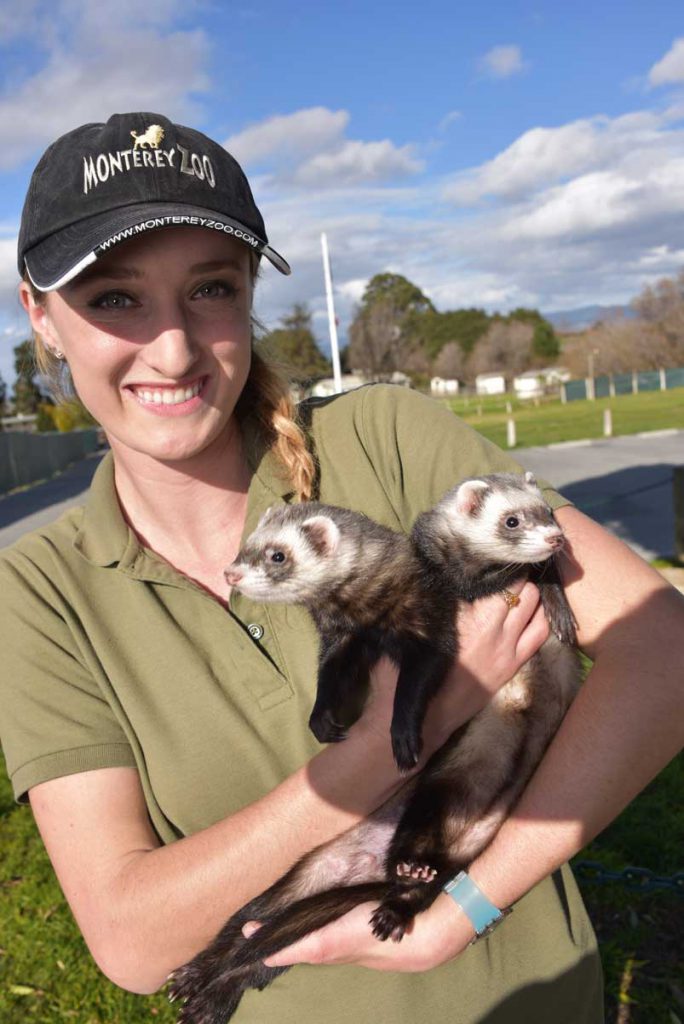
Ferret
The ferret is the domesticated form of the European polecat. Ferrets spend 14–18 hours a day asleep and are most active around the hours of dawn and dusk, meaning they are crepuscular. Unlike their polecat ancestors, which are solitary animals, most ferrets will live happily in social groups. A group of ferrets is commonly referred to as a “business.” As pets, however, they are illegal in California.
Badger
Badgers are short-legged omnivores in the family Mustelidae, which also includes the otters, polecats, weasels and wolverines. The European badger is one of the largest; the American badger, the hog badger and the honey badger are generally a little smaller and lighter.
Taz and Tug are American badgers. Taz was born in a zoo in Arizona and came to us in May 2016. Tug arrived in 2018. Both have become an important part of the Monterey Zoo’s education and conservation programs. Both grew up in the company of many other animals to include dogs, warthogs and best of all their human caretakers. Hand raised in Charlie’s home on the zoo property, today Taz has become nothing short of a family member to Charlie and his wife, Lisa. He is a favorite amongst the Monterey Zoo Staff.
Sloth
Sloths are identified by the number of long, prominent claws that they have on each front foot. There are both two-toed and three-toed sloths. All sloths are built for life in the treetops. They spend nearly all of their time aloft, hanging from branches with a powerful grip aided by their long claws. At the Monterey Zoo, Chloe is one of the most loved animals as she holds on tightly to her keepers. She is a very unique and needy animal, so she is only used in select educational programs and full contact tours.
Porcupine
Porcupines are lumbering, rotund rodents with needle-like spikes, called quills, covering their back, sides, and tail. It’s easy to tell when porcupines are mad: they stomp their feet, hiss, and shake their quills, which normally lie flat against the porcupine’s body. Porcupine’s use their quills to defend themselves.
Kangaroo
Of all the animal unique to only Australia, none represent the country more than Kangaroos. They live groups called “mobs”. Kangaroos are athletic and fast. They belong to the animal family Macropus, which literally means “big foot.” Thanks to their large feet, kangaroos can leap some 30 feet in a single bound, and travel more than 30 miles per hour. Kangaroos are native to Eastern Australia.
Our mob at Monterey Zoo is comprised of Vito, Carmine, and Paulie. All were hand-raised in the homes of our keepers, and our relationships with our kangaroos are similar to those we share with our domestic dogs and cats. Although kangaroos are known for the pouches, ours are all males therefore they have no pouches. But they certainly grew up in them, for when kangaroos are born, they are only partially developed and crawl from the birth canal to their mothers pouch where they continue to develop for several months.
Bennett’s Wallaby
Yet another marsupial native to Australia, Bennet’s wallabies much smaller than kangaroos, living in groups sometimes called a “court”. They only live approx. 9 years in the wild and are endangered due to hunting and habitat loss. They preferred more wooded areas for protection. The word wallaby is derived from the Aboriginal people.
Our Bennett’s Wallabies came to us in May of 2020. Our little joey, “Monterey” is the baby of our female, “Sydney”. “Flynn” rounds off our court as our adult male.
Spotted Hyena
Spotted hyenas are scavengers and often dine on the leftovers of other predators, but they also skilled hunters that will take down wildebeest or antelope. The term “laughing hyena” comes from sounds made by a hyenas when they are nervous or excited. Unlike most animals that are born with spots and loose them later in life, hyenas are actually born black and develop their spots later in life. They’re truly like no other animal as they are born with a full set of teeth, their hair grows “backwards” on their body, their born with the eyes open and will literally eat and digest EVERY part of the prey they kill or come across.
Meet “Ed” at the Monterey Zoo! Ed was an orphaned as a baby in Tanzania, Africa. He was hand raised with and in the home of Monterey Zoo Director, Charlie Sammut. Today, Ed is in a new and much more rewarding habitat. We hope that you’ll visit with him while you are at the zoo.
Kinkajou
The kinkajou is a rainforest mammal often mistaken for a ferret or monkey, but is not closely related to either. They like to eat fruit and are especially fond of figs. Kinajous are also illegal as pets in California. We invite all to enjoy these animals as a visitor to the zoo, or under the umbrella of our volunteer programs.
Coati
The Coati is South America’s version of a raccoon, with a personality similar to our North American raccoon. They can be cranky as they get older but Lucy still participates in our education programs in her very old age and enjoys her time spent with her handlers.
Opossum
A big part of our education program as we are able to show people how truly beautiful and “soft” these animals truly are up-close versus at a distance on the side of the road. North America’s only marsupial is very deserving of our love and respect.
Sugar Glider
Sugar Gliders are small marsupials in the same general family as a Kangaroo or Koala Bear. They are originally from the rainforests of Australia and Indonesia, and have been domestically bred as household pets in the United States for the last 12-15 years. The best way to enjoy these delightful animals is at the zoo!
Cavy
Cavy can be any of 14 species of South American rodents, including guinea pigs, maras, yellow-toothed cavies, mountain cavies, and rock cavies. Bert and Ernie were hand-raised by our keeper staff in their homes making them education ambassadors at the Monterey Zoo.
Muntjac
An old-timer but very much loved favorite at the Monterey Zoo, Presley enjoys his daily visits from guests offering rose petals for treats. Also known as barking deer and Mastreani deer. Muntjacs are the oldest known deer, thought to have begun appearing 15–35 million years ago. They are native to South Asia and are also found in the lower Himalayas and in some areas of Japan.
Fennec Fox
Trixie and Speedy came to our zoo at two different times from two different places . Their introduction to each other has been interesting. Some days we find them cuddled up together while on others, she won’t let him get close. Go figure! The Monterey Zoo is always an interesting place to be.
Binturong
A binturong has a face like a cat’s and a body like a bear’s. They are also called bearcats, but that name is misleading since these animals are not related to either bears or cats. Binturongs are in the civet family and due to a scent gland that helps them mark their territory with a very distinctive odor, they do in fact smell very similar to popcorn, as do the keepers that handle them. Doc is an extreme favorite of many of the keepers at Monterey Zoo as he does a great deal to promote education and conservation in our school programs.
Binturongs are primarily nocturnal, sleeping during the days and moving through their home in the trees looking for fruit at night. Doc came to our zoo as a very special and generous gift from a friend and breeder in South Carolina. His big personality has attracted a well-deserved fan club. People love to interact with him on our full contact tours.
Skunk
Flower was hand raised by Monterey Zoo director Charlie Sammut in his home. She’s an awesome contribution the zoo’s educational programs. Skunks are illegal as pets in California but there are ways you can actually work with Flower through Monterey Zoo’s volunteer program – a wonderful opportunity for people who love animals.


